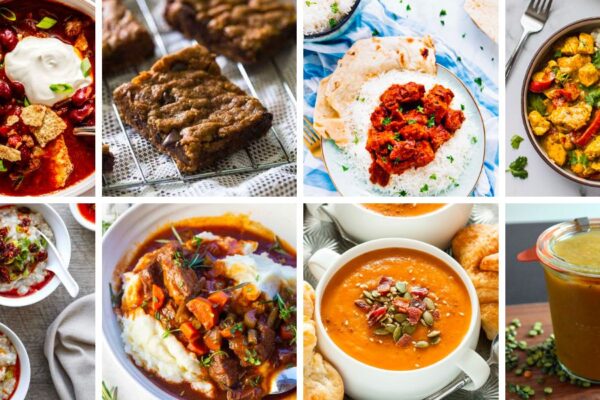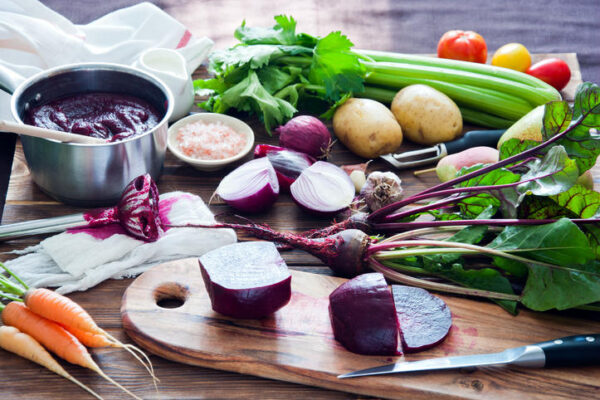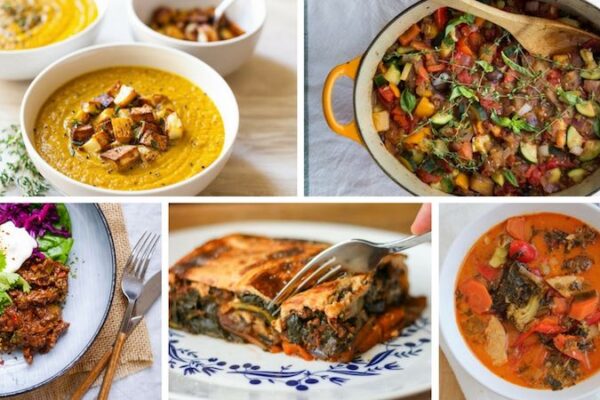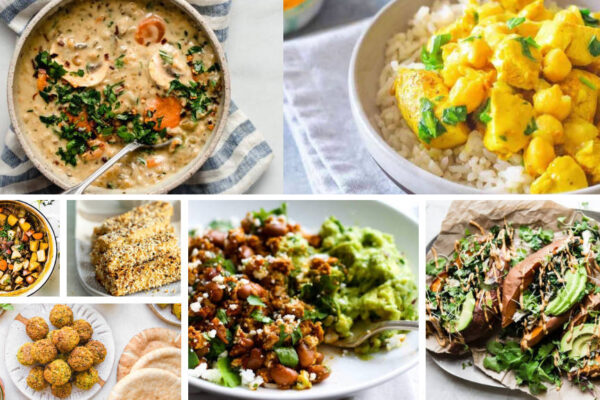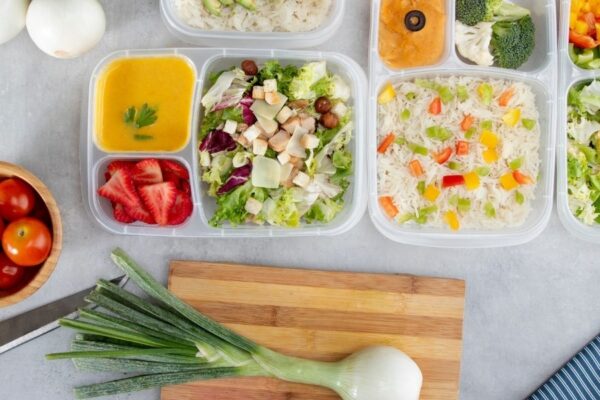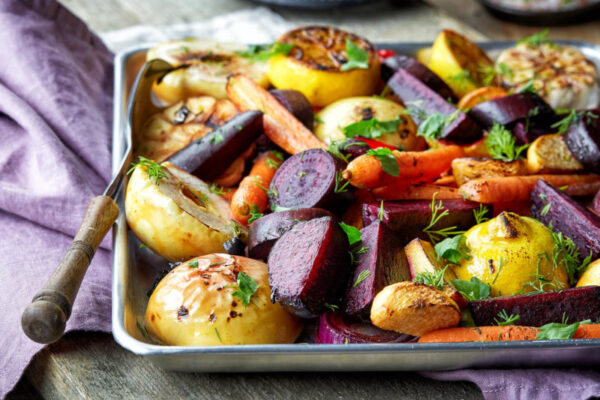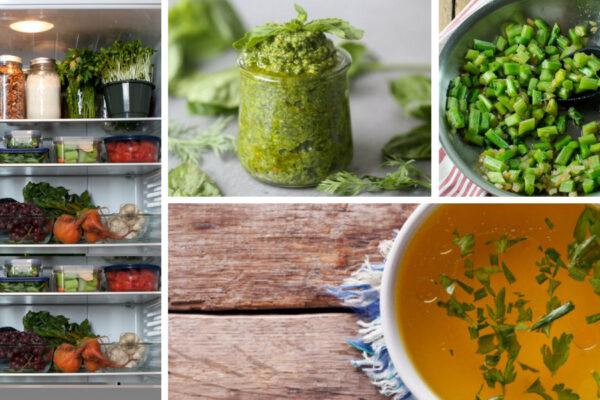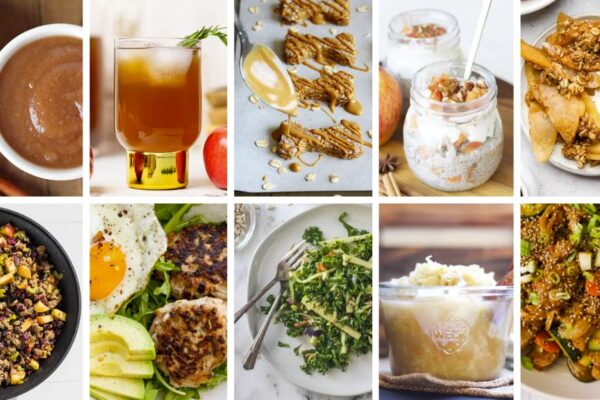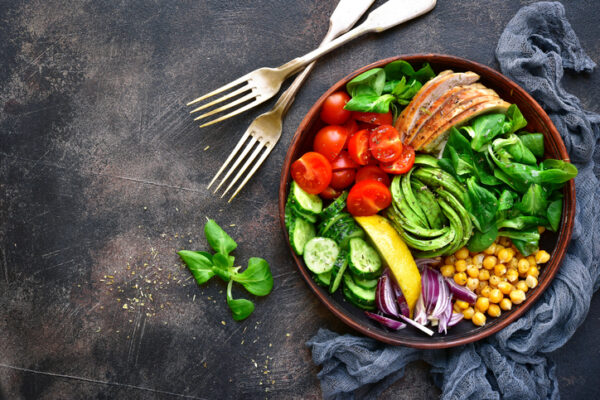5 Essential Meal Plan and Meal Prep Tips
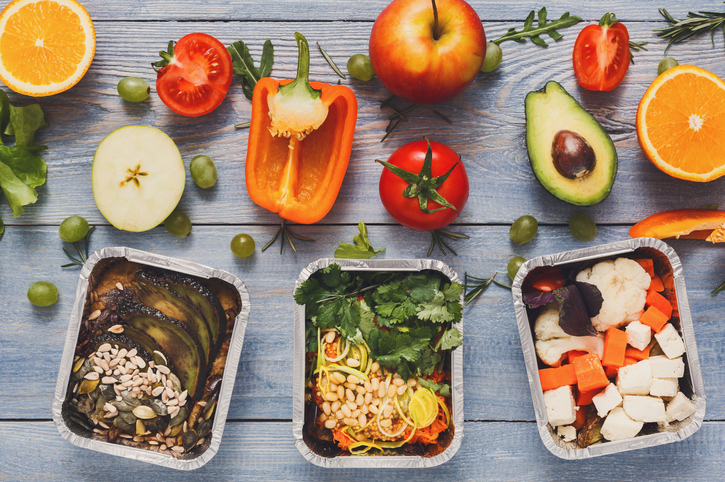
Here’s a secret for you: the key to healthy eating isn’t actually cooking – it’s creating a menu plan and then meal prepping. Once you decide what to eat and you’ve got your ingredients prepped and ready to go, it’s a breeze to whip up a one-pot meal, throw something in the slow cooker or Instant Pot, or assemble a recipe-free dinner bowl. One of the first skills we teach our Culinary Nutrition Expert Program students is how to meal plan and meal prep and they marvel at how it makes mealtimes easier, faster and more enjoyable for the whole family.
With these 5 essential meal plan and meal prep tips, you can become a pro in no time!
5 Essential Meal Plan and Meal Prep Tips
1. Decide what you’re going to make by creating a menu plan.
It’s hard to begin the process if you don’t know what you’re going to eat! Create a 5-day menu plan that includes breakfast, lunch and dinner, as well as snacks or beverages (like elixirs, teas or kombucha) if applicable. If you’re cooking for a family, get everyone involved in the process by having them suggest meal ideas. We like looking to healthy cookbooks, food blogs, magazines, as well as our 50 Best Instagrammers for inspiration.
Here are some great recipes for you to peruse:
- 30 Best Gluten-Free Dinner Ideas
- Interactive Family Meals: Choose Your Own Adventure Meal Ideas
- Top 25 Keto Recipes
- 20 Best Burger Recipes
- 20 Best Gluten-Free Pizza Recipes
- 20 Best Budget-Friendly Recipes
- 20 Best One-Pot Meals
- 12 Vegan Breakfasts (that aren’t cereal or toast)
- 25 Nut-Free Lunch Ideas
- 20 Best Dips and Spreads
- 20 Kid-Friendly Gluten-Free Snacks
- 10 Awesome Uses for Cauliflower Rice
- 32 Best Comfort Food Recipes
Meal plans take some work and forethought, but once you have them in place you can re-use them over and over. Start off by creating four menu plans and rotate through them; then add more plans to the mix as you go. Or let someone else do the work for you by hiring one of our grads to develop a custom meal plan.
2. Gather the right tools and equipment for meal prep.
You don’t need a ton of fancy gadgets to become an expert at meal prep, but there are some inexpensive essential cooking tools that are going to make the process much easier. What you use in your kitchen will depend on what you find helpful, though these are the basic things we recommend.
Prepping/Cooking Tools
- Chopping board
- A good knife
- A large soup/stock pot (get the full scoop on healthy, non-toxic cookware here)
- Measuring cups and spoons
- Spatula or stirring spoon
- Saute pan or frying pan (try cast iron, if you haven’t already)
- Veggie steamer
- Box grater
- Veggie peeler
- A baking sheet or roasting tray
Storage Tools
- Mason jars, stainless steel containers or glass containers
- Wide mouth funnel (for getting things into your jars with less mess!)
- Beeswax wraps
- Mesh produce bags
- Salad spinner
- Parchment paper
The ‘Nice-to-Haves’
Here are some things that aren’t absolutely essential, but are handy to help you meal prep quickly and easily, and allow you to make a wide range of recipes.
- High-speed blender (this can double as a juicer)
- Food processor
- Muffin tin
- Loaf pan
- Rolling pin
- Spice grinder
3. Choose a finite amount of ingredients to use in a given week.
We’re all for eating a variety of foods, but you don’t need to eat 19 different vegetables during a five-day workweek. In other words, keep it simple. Select 5 or 6 key vegetables to focus on each week, as this will help you menu plan/meal prep easily and will likely reduce your food waste and grocery bills too.
For example, if one of your vegetables for the week is carrots, you could prep them in different ways: crudites for snacking, coins for steaming, grated to toss in salads, etc. That way, you can enjoy the variety that a few vegetables have to offer without feeling overwhelmed and overloaded during meal prepping. If you have a well-stocked pantry and flavourful spice rack, you can complement your dishes as needed with extra oomph.
4. Get chopping and batch cooking – and recruit help if you need it!
This is where the rubber hits the road in meal prepping. Depending on what’s on your menu plan and the ingredients you’re using, you may need to:
- wash and dry produce only and chop it right before making your recipe
- slice, dice and chop everything in preparation for cooking, sauteeing, roasting, snacking etc.
- pre-make recipe components so they can be used for assembly (condiments, cooked grains, nut butters, etc.)
Everyone’s prepping schedule is going to look a little different. These are some of the standard things we like to do:
- Chop and store onions and garlic
- Cut up carrots and celery, or other raw veg, for snacking
- Make a condiment of some kind (here are 12 you can easily make at home)
- Cook up a batch of grains
- Prep a simple salad dressing
- Make a batch of homemade nut/seed milk (this is easily stored in the freezer, too)
- Bake something, like gluten-free bread, granola or muffins
- Prep as many veggies as we can in advance for recipes
Get your FREE Batch Cooking Guide plus 35 more free resources!
Fill out the form below for instant access.
Free Resource Library
Enjoy more than 40 downloadable guides, recipes, and resources.
Some other resources that we find immensely helpful:
- 8 Packaged Staple Foods You Can Easily Make From Scratch
- How to Start a Cooking Cooperative
- 20 Healthy Kitchen Hacks to Get Dinner on the Table Fast
- Healthy Batch Cooking 101
- Eat Healthy At Work with These Tips and Recipes
- How to Solve What’s For Dinner Stress and Revive Mealtimes
5. Store everything properly so it lasts.
The last thing you need after spending hours menu planning and meal prepping is to open up a container and find moldy lettuce or dried-out carrots you can no longer use. Learn how to store food properly in the fridge so everything is fresh and ready when you need it.
Aside from prepped ingredients, batch cooking and freezing entire recipes can help, too. Soups, chilis, stews, muffins, gluten-free lasagna, smoothie kits and burgers all freeze really well – grab the best freezer tips here.
Grab Our Meal Plan and Meal Prep Guide!
Put these menu plan and meal prep tips into action right away by downloading our easy Meal Plan and Meal Prep Guide. It provides the templates you need to help you create your menu plan and realistically prep for a delicious week of eating.
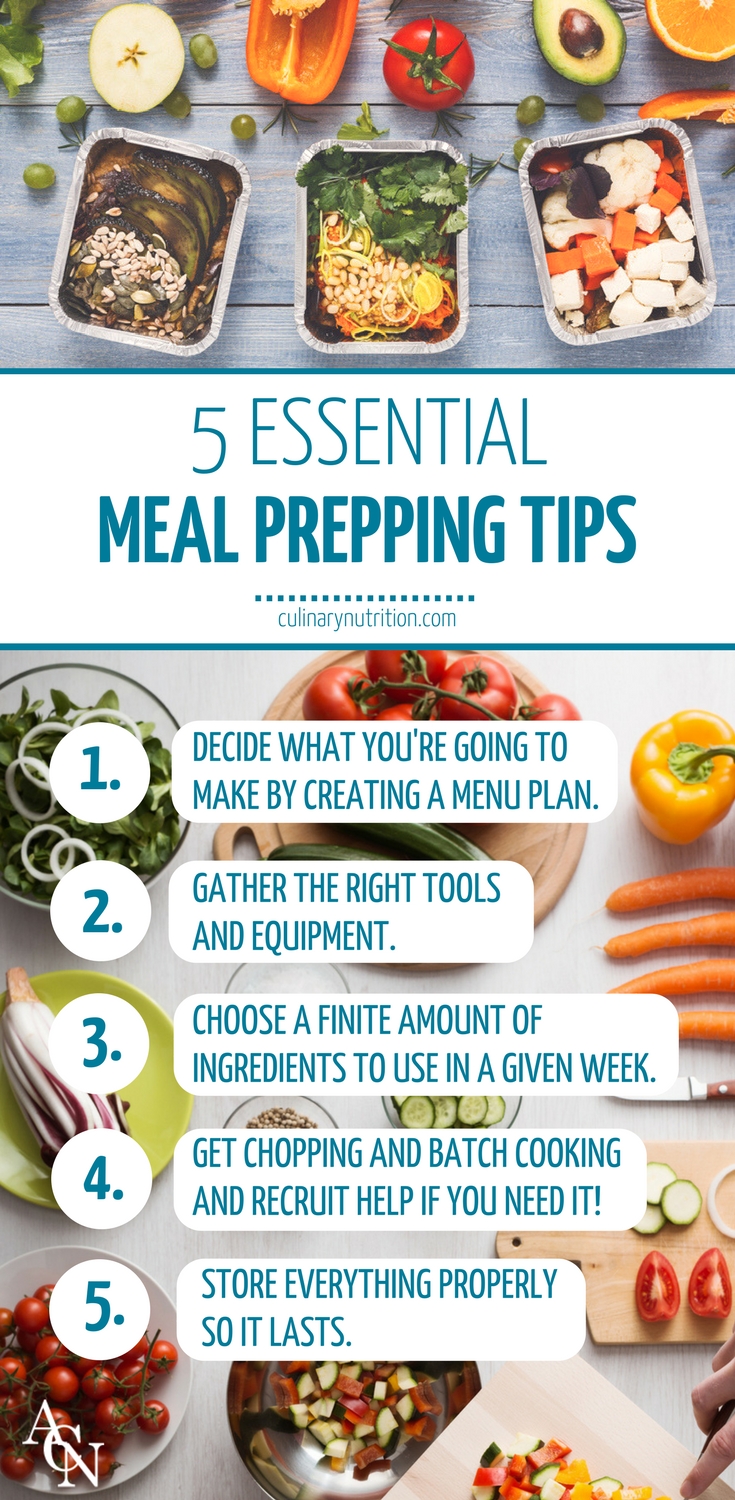
Image: Milkos
Free Resource Library
Enjoy more than 40 downloadable guides, recipes, and resources.















